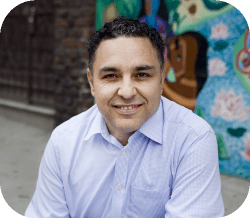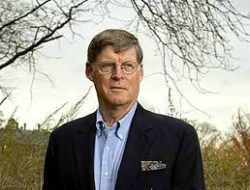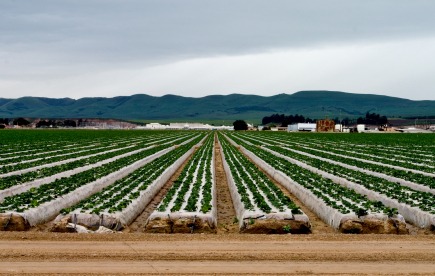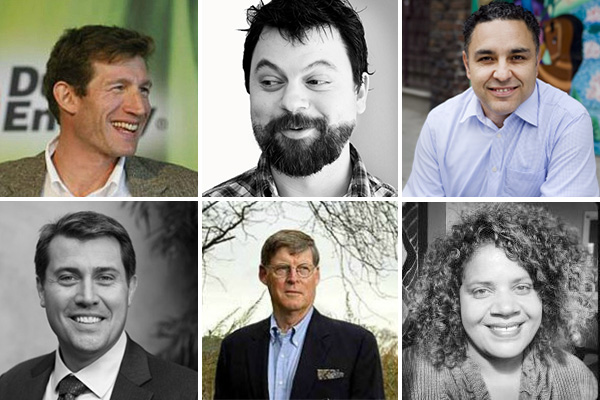When a reader asked Grist advice maven Umbra Fisk how she would spend a $50 million lottery windfall on the planet, she indulged in some quick-pick fantasizing, rounding up ideas from a few leaders in the field. Here are their full responses:
Erika Allen, Chicago and national projects director, Growing Power:
 My son, who just turned 5 in March, and I discussed this. He would buy buildings in the town and make sure everyone has a nice place to live and lots of strawberries to eat. (There is a longer story here about how he connects homelessness and food.) Along the same vein, [I would put it into] working to create community food systems that are closed loop … food, energy, housing, education, holistic health in a manner that constantly recirculates wealth and monetizes everyone’s contributions and inputs.
My son, who just turned 5 in March, and I discussed this. He would buy buildings in the town and make sure everyone has a nice place to live and lots of strawberries to eat. (There is a longer story here about how he connects homelessness and food.) Along the same vein, [I would put it into] working to create community food systems that are closed loop … food, energy, housing, education, holistic health in a manner that constantly recirculates wealth and monetizes everyone’s contributions and inputs.
David Roberts, senior staff writer, Grist:

There’s no definitive way to answer that. I can only say what my idiosyncratic preference would be. I don’t actually think $50 million gets you much in politics, or in big philanthropy. I would break it up into 50 $1 million chunks and seed-fund 50 different people/organizations doing work around community-based distributed energy. The democratization of energy is a wedge that could destabilize utilities and spark all kinds of new innovations and new markets. A little money in that area, spent strategically, could go a long way.
Mark Lee, executive director, SustainAbility:

Like an investor trying to stay afloat while succeeding in the marketplace, I’d diversify.
- I’d make a big investment ($10 million) in a single activist campaign I really believe has potential to be effective, e.g. Sierra Club’s Beyond Coal.
- I’d look to invest $10 million in exciting, daring entrepreneurs with potential to develop and release disruptive innovations into the marketplace; as opposed to the single donation to the campaign, this would take a lot of time, to find the entrepreneurs and sort the right scale of investment in each.
- I’d do something local to address climate adaptation issues while continuing the mitigation battle, e.g. funding urban forests/tree canopy in the region where I live, focusing on economically disadvantaged communities; it would be hard to spend $10 million on trees in one city (!) so I’d sort the scale of investment right for where I live, then offer matching money to other cities willing to do the same. (If for some reason not urban forests, I’d make another green/livable cities investment, or perhaps shift to fresh water.)
- I’d make a conservation investment in a key biodiversity region in an emerging economy, e.g. Brazil, Indonesia — I’d pick the one where my investment would trigger the most matching or push something partially funded over the top or convince government to offer protected status to the region; I’d want it to have an ecosystem services element, so others could look at it and learn about the value that nature and thus such investments provide society.
- Then I’d take the last $10 million and invest in a few key political battles I felt I could influence. Given the scale of money in politics, the choices would be limited and critical. I’d perhaps look to help elect an incredibly progressive mayor fighting a tight battle in a city with global stature/leadership potential, as I think cities are such a hotbed of sustainable development thinking/practice right now (our best laboratory, if you will); I’d look to help tip a key House or Senate seat; and I’d battle local/regional initiatives, e.g. the next Prop 23/AB 32-like fight.
I’d also play The Barenaked Ladies’ “If I Had a Million Dollars” 50 times.
José Quinoñez, executive director, Mission Asset Fund:

If I won the lottery and had $50 million to save the planet, I would invest in advocacy groups that focus all of their energy on changing public policy. I would devise a five-year funding plan to give the advocacy groups time to staff up and get their campaigns in high gear to change policy. You see, the only way to bend the curve on deadly emissions is to change our laws — change our means of production and consumption. Yes, we could subsidize buyers to get electric cars, but that would be a feel-good effort that would do very little in the fight to save the planet. $50 million is a lot of money, don’t get me wrong. But it’s not enough to alter a $16 trillion economy by subsidizing a few purchases. We need fundamental policy changes at all levels to save the planet.
Jack Robinson, green-investment pioneer:

Tanit Sakakini
Great question. In my opinion, the biggest challenge facing the planet is global warming/climate change, the solution for which lies in pricing or taxing carbon in such a way that captures the costs, including all externalities. For starters, think of Sandy and the billions of dollars needed just to cover the direct costs.
Unfortunately, $50 million or even $50 billion probably would not be enough to change the vested political and corporate interests. As for the enviro groups, their work is to be admired and encouraged and they deserve an A+ for effort, but as we know, the job is incomplete. Regarding clean technologies, enough exists today to get the job done, with improvements being made daily with lower costs and better results. So what is missing?
Very simply, it is human behavior. Unless and until employees, consumers, and voters integrate sustainability into all aspects of their daily lives, the planet will remain at risk. While a few corporations, government agencies, and institutional entities are beginning to integrate behavior change into their cultures, it needs to be a much bigger initiative. $50 million adroitly applied to changing human behavior could generate a powerful return on the investment in terms of mitigating global warming and climate change.
Auden Schendler, VP of sustainability at Aspen Ski Company:

First off, saving civilization means solving climate change. And the one thing we know about the climate movement is that it has failed: CO2 keeps rising, recently crossing the 400 ppm threshold. The nonprofit community has tried a bunch of things — Al Gore’s group tried to demonstrate the impacts of severe weather through the Climate Reality Project; 350.org has been pushing on Keystone XL as an iconic battle. These are good ideas from our best thinkers, but they may or may not solve the problem. Yet looking at history, we actually know how to solve climate change, because we have done similar things before, on labor, on civil rights, and most recently, quickly and spectacularly, on gay marriage. Short story: We need to create a social movement to force politicians to act.
The catalysts for these movements can be relatively inexpensive and grassroots. Miles Horton’s Highlander School, for example, trained up both MLK and Rosa parks in short order. $50 million toward similar work on climate would make a huge difference, and would have much greater impact than, say, trying to fight big oil’s influence in politics, which laughs at your silly $50 million.
So who is creating that social movement on climate? The most exciting group is Citizens Climate Lobby, which is, simply, creating the necessary political will for climate action, starting in people’s living rooms, where most revolutions start. A few other groups are working on similar efforts: 350.org has been enormously successful in its short existence. And Protect Our Winters (disclosure: I serve on their board) is trying to use the sexy and influential snow-sports industry, with its famous athletes and avid, influential participants, to drive policy change in Washington. These groups are all shoestring operations that are growing rapidly. Their work is based in a simple and proven concept: Politicians don’t create public will, they respond to it, to quote Mark Reynolds of Citizens Climate Lobby. As humans, we know how to do revolutions. But a little cash kick-starter never hurt.



